As language teachers we all have to teach units on clothing and descriptive adjectives, and we all have an array of activities that we use. Last year, in Spanish III, I wanted to incorporate some music specifically to work with clothing vocabulary and found two songs with “me pongo” in the titles! Mango Punch is a group from Texas and El Marchena is from Spain. For this song, which my students found to be really fast and difficult to understand (clothing is the second chapter of the school year), I had them listen merely for clothing words that they could understand, and then the numbers associated with them. I also had them try to determine what the problem was, as indicated in the song.
They had more fun with the Mango Punch video After listening to it, then viewing it, I had the students attempt to complete this:
¿Qué me pongo? Mango Punch
¿Qué palabra oyes?
Tan sólo quince / catorce años tenía ésta joven al iniciarse
en ese diario dilema que experimentan tantas mujeres/ mares
sin falta cada mañana poquito antes de maquillarse / vestirse
iba a buscar a su mami para probarle / pedirle que le aconseje.
¿Qué me pongo, mami, qué me pongo?
No sé si me va ponerme la bufanda/ blusa azul y el moño rojo / rosado
¿Qué me pongo, mami, qué me pongo?
Y este corte de vestirse /vestido pasó de moda / pasó la moto el año pasado
¿Qué me pongo, mami, qué me pongo?
con este pantalón blanco / negro yo creo que ya parezco retrato
¿Qué me pongo, mami, qué me pongo?
no quiero que mis amigas me hagan pasar tremendo mal rato
Esta situación tan mala ni se acercaba a la gran tortura
de tener que ir al centro comercial / colegio todos los días uniformada
pero lo que casi casi la lleva a borde de la locura
era que su demás ropa / reloj era muy poquita y medio anticuada.
¿Qué me pongo, mami, qué me pongo?
No sé si me va ponerme la blusa con aretes / azul y el moño rosado
¿Qué me pongo, mami, qué me pongo?
Y este corte/caro de vestido pasó de moda el año / mes pasado
¿Qué me pongo, mami, qué me pongo?
con este pantalón / pulsera negro yo creo que ya parezco retrato
¿Qué me pongo, mami / papi , qué me pongo?
no quiero que mis amigas me hagan pasar tremendo mal rato
1. ¿Cómo se dice “What should I wear? ___________________________
2. ¿Qué es el problema que tiene muchas muchachas/chicas?
________________________________________________________
3. ¿Qué es la gran tortura? _______________________________
Another listening activity that we did was called “Mi Día Terrible” in which I described what happened that morning as I got ready to go to school. This was the script:
Es un día terrible! Me levanté tarde y no había luz en mi dormitorio. No podía ver la ropa. Cuando llegué a la escuela, vi que llevaba:
- unos pantalones negros
- unos caletines azules
- una camisa roja, rosada y violeta
- una bufanda verde y azul
- unos zapatos anaranjados
- un collar de Disney
- una chaqueta amarilla
The students had another paper where they had to determine, after listening, what I actually wore.
¿Qué oyes?
pulsera tacones altos
pantalones collar
zapatos blusa
camisa calcetines
abrigo chaqueta
bufanda anillo
Escucha otra vez y escribe los colores de la ropa.
Ahora, dibuja, con colores, lo que llevó tu profesora.
Another song that I put in this unit so that we could review and expand on descriptive vocabualary was “Corazón sin cara” by Prince Royce. We first watched the video, discussed what they thought he was saying, and then listened again with the words and a few pictures that illustrated unfamiliar words.
y ya me contaron… que te acomplejas de tu imagen
y mira el espejo 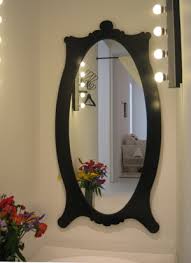
que linda eres sin maquillaje 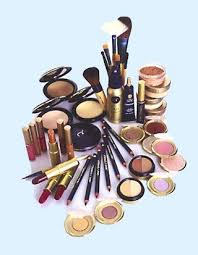
y si eres gorda o flaca todo eso no me importa a mí
y tampoco soy perfecto sólo sé que yo te quiero así
y el corazón no tiene cara
y te prometo que lo nuestro nunca va a terminar
y el amor vive en el alma
ni con un deseo
sabes que nada de ti irá a cambiar
prende una vela 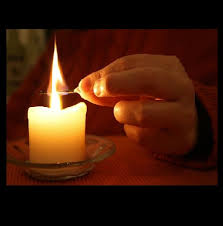 , rézale a Dios
, rézale a Dios 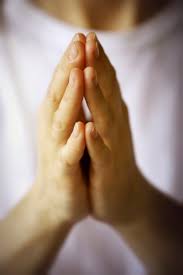 y dale gracias que tenemos ese lindo corazón
y dale gracias que tenemos ese lindo corazón
prende una vela, pide perdón
y por creer que tu eres fea te dedico esta canción
Another activity involved collecting many large photos from magazines and laminating them. Each group of two students received a photo and had thirty seconds to describe all of the clothing in the picture, the colors, where someone would wear the clothing, etc. They then passed the picture to the right to the next group of student and received a new picture from the group to their left, and the process started again. To help expand the vocabulary, they could see this on the SMARTboard:
- la ropa
- los colores dark: oscuro/a light: claro/a gold: dorado silver: plateado
- los accesorios (las joyas) gold: de oro silver: de plata
- a rayas
 a cuadros
a cuadros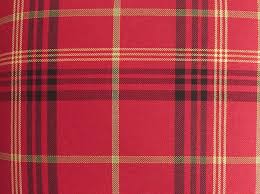
- de lunares
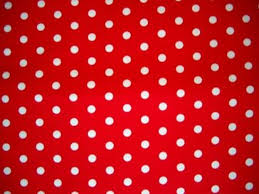
Of course, there were many, many opportunities to have conversations with partners. Here is a guided example:
Let’s go shopping at the mall!
OK…what do you want to look for?
Well, I wanted a new green shirt, but I need new pants. My old pants are tight.
I think that AE is having a big sale. All of the shirts and jeans are on sale.
Really? Let’s go there.
At the store En la tienda
Hey, look at these shirts. Do you like the plaid ones or the striped ones more?
Hmmm, I don’t know. I think that I like the striped ones more.
I don’t think they have them in my size.
What size do you need?
Sometimes I need a medium, sometimes a large. These look like they are all smalls.
Oh well, let’s look at the pants.
OK, but I’m going to have to try them on.
The dressing rooms are to the right.
OK. How much do these pants cost?
Look at the ticket. It has the price.
Wow! 40% reduced. A great discount!
trying them on
What do you think? How do I look?
You look OK. But they are a little loose, I like the first pants more.
Yeah. I’m going to buy them. How much are they with tax?
They are_____. Son______
I’m so happy that I found what I was looking for.
Another guided conversation, but with less guidance is this activity about the last time I went shopping:
La última vez que fui de compras…….
- ¿Qué querías comprar?
- ¿Adónde fuiste?
- ¿Encontraste lo que buscabas en ese lugar (place)?
- ¿Te acompaño alguien (somebody)?
- ¿Fuiste a varios lugares o un solo lugar?
- ¿Cómo era la tienda adónde fuiste? ¿Quiénes estaban allí?
- ¿Por qué compraste o no compraste lo que buscabas?
- ¿Cuánto pagaste? ¿Había descuentos?
A more open ended practice was when I gave the group of two to three students a situation and they created a dialogue for it. Over the span of several days, each group had at least three of the situations:
- You are in the dressing room trying on many different articles of clothing for a beach vacation. Some fit, others don’t, maybe the color or size is wrong, etc. What do you want to buy/what should you buy? Your friend let’s you know what does/doesn’t look good.
- You are in the store looking for articles of clothing that are on sale but there are problems with the sizes. Can you find what you are looking for? Your friend helps you look for/find different things.
- You are about to go to the cash register to pay for several articles of clothing and you don’t know if you have enough money. What you want and what you need are two different things. Your friend helps you figure out how much things cost.
- You are on the TV show “How Do I Look” (¿Cómo me veo?) and you are making comments about the clothes someone has/or is wearing. What is the problem with the clothing and what should you do? Your friend helps you decide what looks good/doesn’t look good.
- You are in the dressing room trying on many different articles of clothing for a big school dance. Some fit, others don’t, maybe the color or size is wrong, etc. Your friend helps you to decide what accessories you need.
And finally, just for fun, here is a great link for reviewing colors with a great little memory game:
http://www.spanishspanish.com/colors/color_menu.html
and of course there is also the awesome BBC program Mi Vida Loca. Chapter 17 deals with buying clothing, and can be used without viewing the previous chapters. My students have always enjoyed this, even if it is a bit elementary for Spanish III.
There are so many activities that can be done with this essential Spanish vocabulary. I would really like to hear some of the activities that work well with you.
